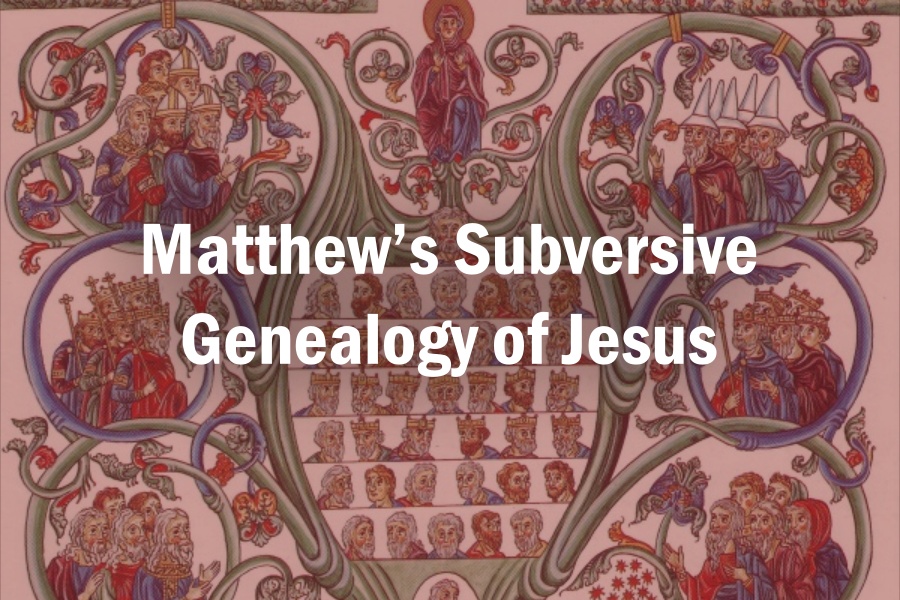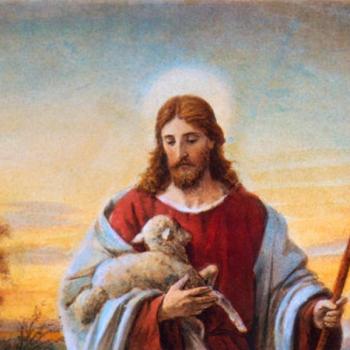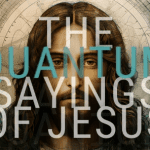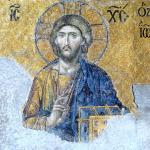The book of the genealogy of Jesus Christ, the son of David, the son of Abraham. (Matthew 1:1, WEB)
As we begin reading the Gospel According to Matthew, it’s tempting to just skip over the genealogy he opens with. After all, what do we really have to learn from a list of names? But this list is far more than a historical record.
In fact, Matthew doesn’t seem at all concerned with historical reliability here. He freely skips over generations, and in some places he even swaps historical figures. That’s because Matthew intends to make a statement with this genealogy.
While Luke takes Jesus’ genealogy all the way back to Adam, establishing Jesus’ union with humanity, Matthew starts with Abraham, establishing Jesus’ union with the nation of Israel. And he emphasizes David, establishing Jesus’ rightful claim to the throne of Israel.
But this dual emphasis of David and Abraham can also be taken as a promise to the Gentiles. Frederick Dale Bruner, in his Matthew: A Commentary, puts it this way:
The two great baskets of promise in the Hebrew Scriptures are the promise to David of a son who would be a King forever (2 Sam 7; 1 Chron 17) and the promise to Abraham of a seed who would be a blessing for everyone (Gen 12; 18; 22)—that is to say, a temporal promise to David (“forever”) and a spatial promise to Abraham (“for everyone”), a promise meeting Israel’s longing for an eternal David, and a promise meeting the Gentiles’ yearning for a universal Savior. “Son of David” says, “Israel, here is your Messiah!”; “Son of Abraham” says, “Nations, here is your hope!”
Yet Matthew doesn’t stick with kings, patriarchs, and other “respectable” figures. In a culture obsessed with national purity, he doesn’t stick with Israelites. And in a culture that pushed females to the sidelines, he doesn’t even stick with males.
Abraham became the father of Isaac. Isaac became the father of Jacob. Jacob became the father of Judah and his brothers. Judah became the father of Perez and Zerah by Tamar. Perez became the father of Hezron. Hezron became the father of Ram. (Matthew 1:2–3, WEB)
Just a few generations in, Matthew points out the fact that “Judah became the father of Perez and Zerah by Tamar.” He could have easily skipped the bit about Tamar, and the genealogy would have continued just fine, but he wanted to be sure his readers remembered this detail. Tamar was Judah’s daughter in law, but she dressed herself as a prostitute, seduced her father in law, and conceived Perez and Zerah by this incestuous relationship (Genesis 38).
Ram became the father of Amminadab. Amminadab became the father of Nahshon. Nahshon became the father of Salmon. Salmon became the father of Boaz by Rahab. Boaz became the father of Obed by Ruth. Obed became the father of Jesse. (Matthew 1:4–5, WEB)
Matthew here points out two more women who could have easily been left out. Rahab was a prostitute and a Canaanite. Ruth was no prostitute, but as Bruner points out, she was “a Moabite, a descendant of the incestuous Lot (Gen 19), and thus low on the social and spiritual register of some of the racially protective people of God.”
Jesse became the father of King David. David became the father of Solomon by her who had been Uriah’s wife. (Matthew 1:6, WEB)
Here Matthew points out another woman, yet this time he does so indirectly, and this too is intentional. Rather than calling her by name, Matthew refers to Bathsheba as “her who had been Uriah’s wife”—in order to highlight David’s sin. David spied on Bathsheba while she was bathing, he ordered for her to be brought to him, he impregnated her (and given the fact that she had no right to refuse the king, I’m very inclined to call this rape), and he ultimately orchestrated the murder of her husband in an attempt to cover up his sin (2 Samuel 11).
Note that all these anomalous inclusions in the genealogy either led up to or were involved with David, the great hero of Israel. Matthew is showing his purity-obsessed Jewish audience that God can and will work through anyone. He does not prefer the morally upright, those with Jewish blood, nor even males. Here’s what William Barclay says in The New Daily Study Bible: The Gospel of Matthew:
If Matthew had ransacked the pages of the Old Testament for improbable candidates, he could not have discovered four more incredible ancestors for Jesus Christ. But, surely, there is something very lovely in this. Here, at the very beginning, Matthew shows us in symbol the essence of the gospel of God in Jesus Christ, for here he shows us the barriers going down.
Matthew continues the genealogy down to Jesus.
Solomon became the father of Rehoboam. Rehoboam became the father of Abijah. Abijah became the father of Asa. Asa became the father of Jehoshaphat. Jehoshaphat became the father of Joram. Joram became the father of Uzziah. Uzziah became the father of Jotham. Jotham became the father of Ahaz. Ahaz became the father of Hezekiah. Hezekiah became the father of Manasseh. Manasseh became the father of Amon. Amon became the father of Josiah. Josiah became the father of Jechoniah and his brothers, at the time of the exile to Babylon.
After the exile to Babylon, Jechoniah became the father of Shealtiel. Shealtiel became the father of Zerubbabel. Zerubbabel became the father of Abiud. Abiud became the father of Eliakim. Eliakim became the father of Azor. Azor became the father of Zadok. Zadok became the father of Achim. Achim became the father of Eliud. Eliud became the father of Eleazar. Eleazar became the father of Matthan. Matthan became the father of Jacob. Jacob became the father of Joseph, the husband of Mary, from whom was born Jesus, who is called Christ.
So all the generations from Abraham to David are fourteen generations; from David to the exile to Babylon fourteen generations; and from the carrying away to Babylon to the Christ, fourteen generations. (Matthew 1:7–17, WEB)
These names are far less remarkable. The most interesting thing about them is how Matthew skipped over multiple generations to artificially fit the genealogy into groups of fourteen. Some theorize that this has to do with seven being the number of perfection and point out that Jesus would then mark the beginning of the seventh seven. Others suggest that these groups served merely to aid memorization. I suppose either explanation is possible.
On the other hand, should you want to memorize the genealogy, this is really the way you should do it:
This is the second post in my “Blogging through Matthew” series. Stay tuned for the next post, in which I’ll take a look at the much-debated question of whether Mary remained a perpetual virgin.

















